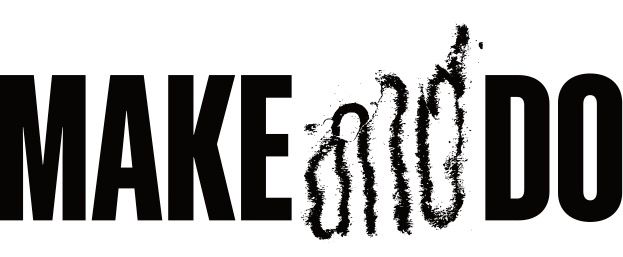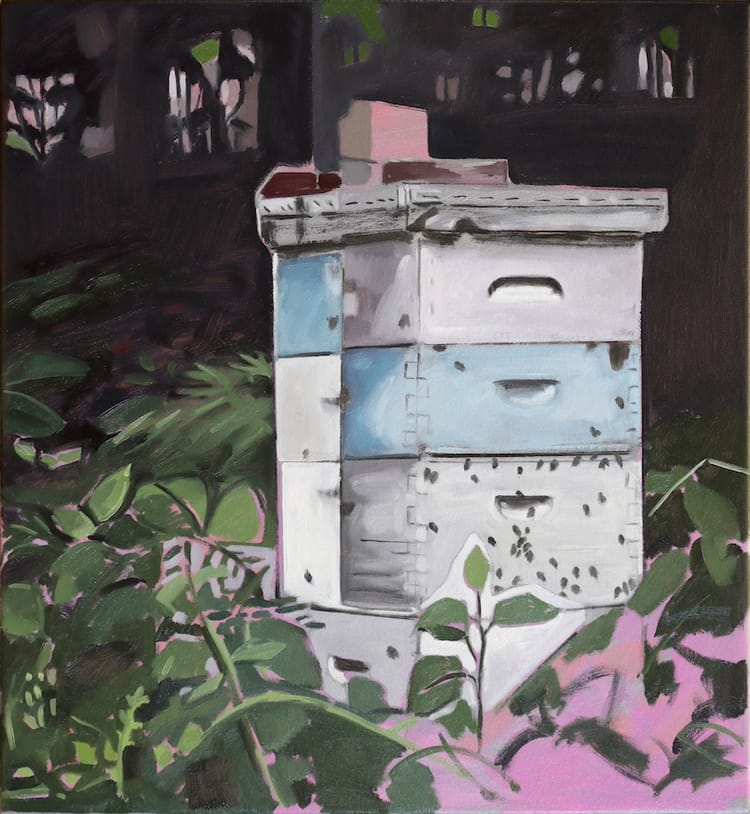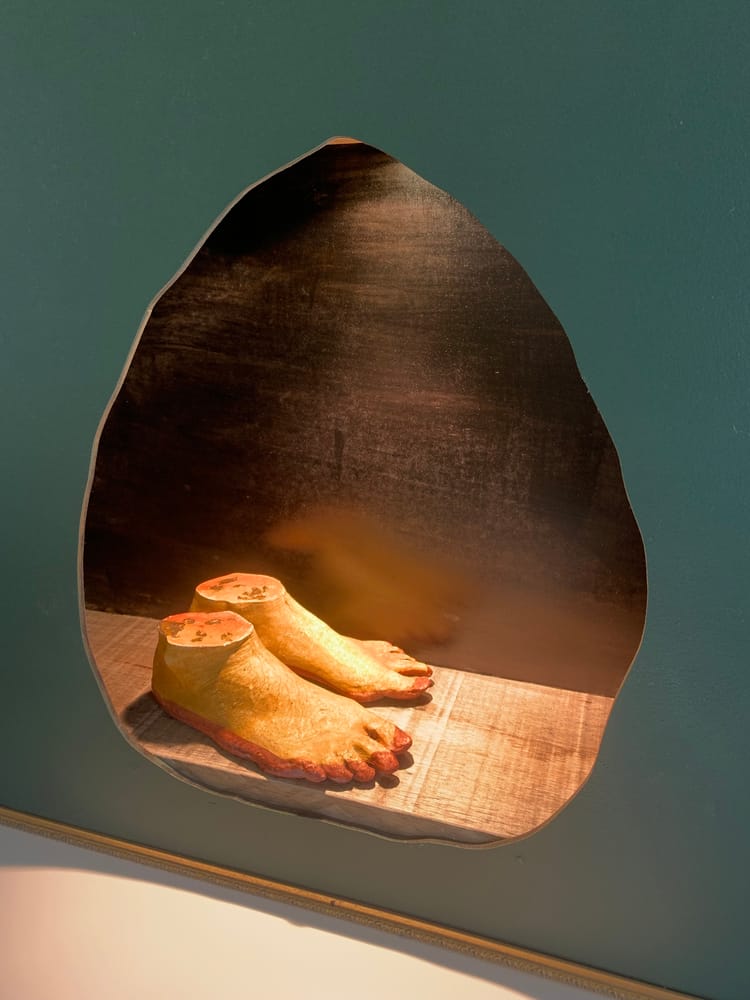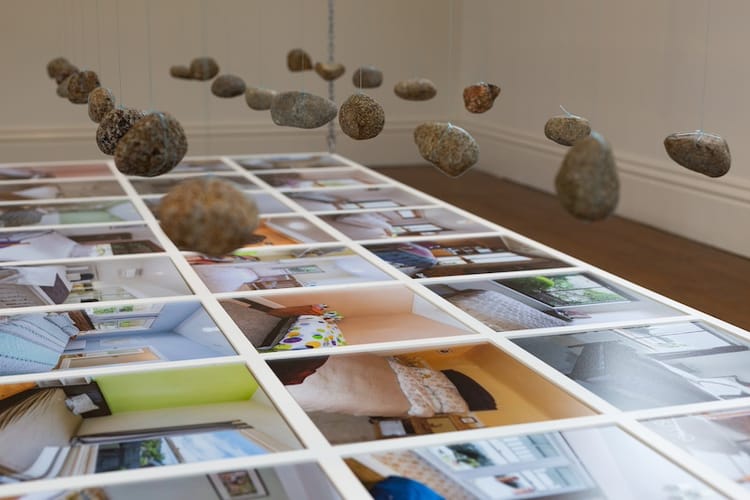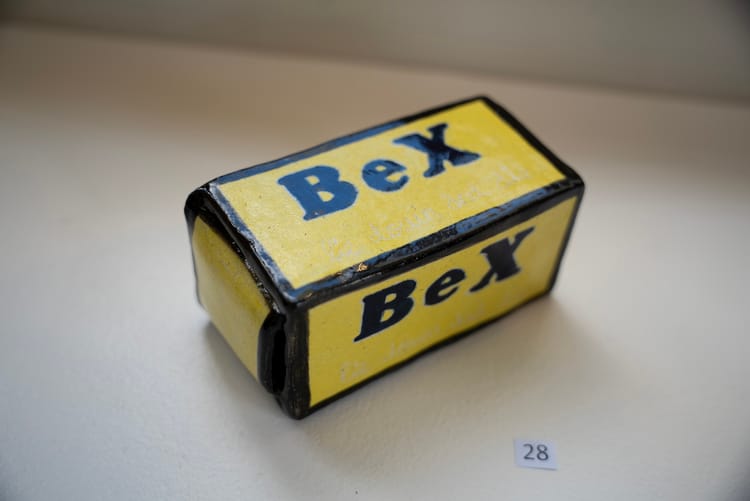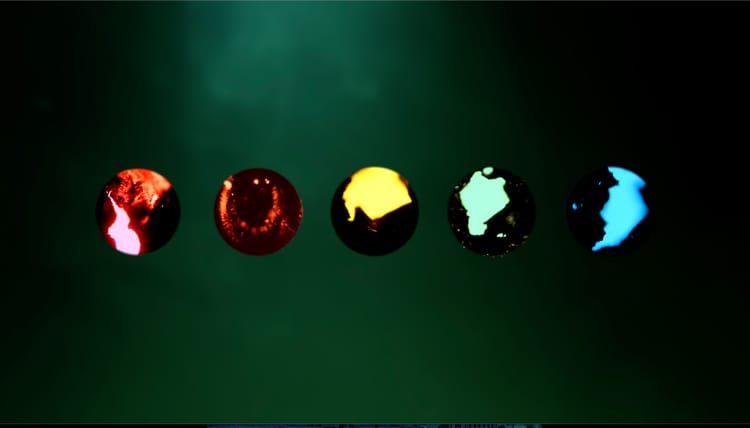Interior Topographies
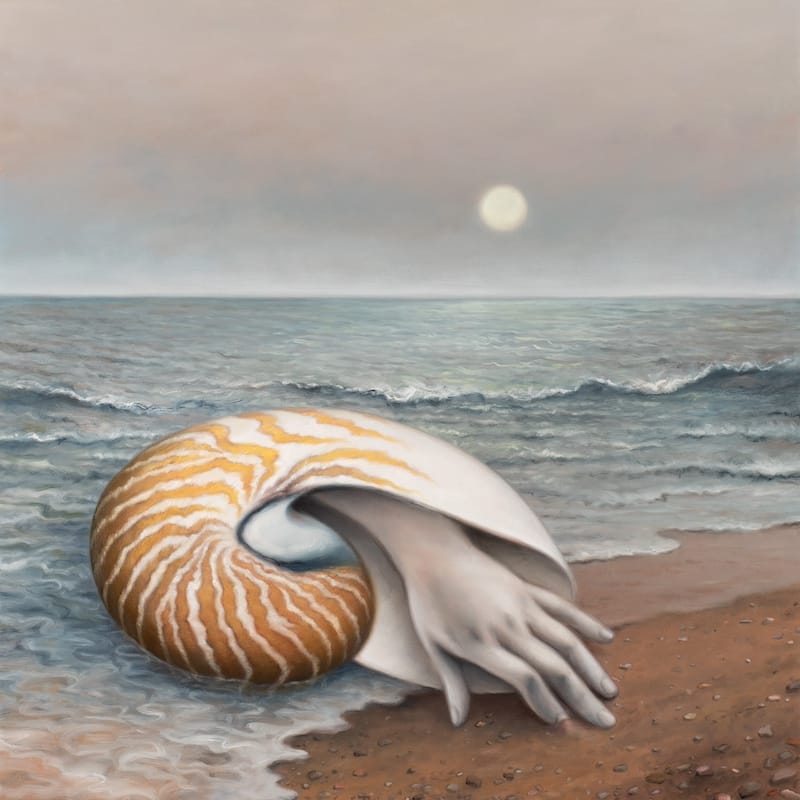
Amber Koroluk-Stephenson
Bett Gallery
16 February – 9 March 2024
Let’s not beat around the bush here; women who make art and have children will likely be told at some point by someone that their child is their greatest artwork. I’m sure person saying this means well, but let’s just consider how offensive that line actually is: kids are not artworks, they’re people, the process of doing everything you need to do to steer from inception to adulthood is long and arduous, and not really like making art at all, and it suggests that artists who don’t have children are somehow lacking or lesser.
All this is bullshit.
Plenty of artists are parents and plenty are not. Yes, of course there are artists that celebrate this, and of course there are artists whose work is totally separate from it. Being a mother might be the goal and purpose of someone’s life, sure, but it equally might not be, and it’s a lot of hard, relentless work no matter how you couch it.
When I look at Interior Topographies, the new show from Amber Koroluk-Stephenson, this is one of multiple notions that erupt in my mind. It’s a wild show, and it’s very much a feminist show, but it’s not so much a statement as a series of question around the notions of fertility, sexuality, being an artist, being a woman who makes art, and being a parent. There’s also a very real examination about what it means to be a woman artist, and if you spread it all out a little, the relationship between women and art is part of the work here as well. It’s a complex show.
It's hard to know where to start, really, and it’s important to note that all these works form a web of connectivity – works speak to each other. Something that does strike me though is how much Amber has connected with the work of other artists
There’s a painting here influenced by Dora Maar. Dora Maar is (was) an incredible artist. She’s an important surrealist who was a pioneer of experimental photographic work; she’s pivotal in art history because of that, as she’s one of a number of artists who exploded the photographic form from bare realism to experimentation and her images are influential and becoming more so, yet she’s probably best known as the person who photographically documented Picasso’s creation of the large anti-war mural, Guernica. Amber’s referencing of Dora Maar bought that to mind – and that’s interesting, because this is how this woman artist is largely recalled historically, although this is changing and she’s becoming more recognised as an artist in her own right (and she really should be – her work is phenomenal. I like it better than Picasso’s too).
There’s a reference to Madonna, the pop diva. Madonna’s an iconic and uncompromising artist who did it all then did it again, and she’s had a career and been a parent, played the media game uncompromisingly and thrived in a hostile field. A conical bra, designed by Jean Paul Gaultier is hung on a wall, like a work of art[1], which it is. There’s a small fluffy chick nearby, which the bra will not feed or nurture, and the work is called Gravity of Love (Madonna and Child), so it’s also subverting the tradition of Madonna and Child Paintings, which is quite old subject matter, and depict women as mothers above all else, which is something Amber is questioning here.
Interior Topographies is art[2] about women, women who make art, women who have children and sacrifice art making to be parents, or even to be lovers of other artists. It could be just about her, but the push outwards and the referencing of other women who are creative and have had to navigate a very male-dominated space to have careers is visible.
There are other (male) artists in play in the interconnected web that stretches across these works. Man Ray is here, directly referred to like Maar, and like her he’s a photographer and a surrealist. Amber isn’t exactly making surrealist art in the traditional sense, but she isn’t not doing so either – if there’s one thing that Amber has truly mastered in the creation of all her works, it’s a real sense of the uncanny, of that strange unearthliness that lifts the works to somewhere beyond being mere investigative analogy. There’s always the logic of dream to be found in the work, always that blurred edge where reality softens and bleeds out – the skewed positioning of furniture on walls (or is it a floor on it’s side? Do I need to stand on the wall), the doors that lead out of the work, to where? The shimmering full moons, the hints of the sea.
There’s so many possible complex takes and potential readings. There’s a butterfly flying through a flaming circle. What’s this? It’s an old school circus trick; make the animal jump through the hoop. It’s to entertain a crowd by watching something do that which it would not, but it also demonstrates the control the animal trainer has over the animal: I am going to make you do something that goes against every instinct you have, including your sense of self preservation, your aversion to injury on a very primal level. It’s not a lion or a tiger though, it’s a butterfly and its impossibly fragile and it’s even called an Australian Painted Lady. I throw a stone into a still pond and it causes an interconnected ripple of ideas that move out in every direction, and this what this painting does: It could be Amber herself, and how she feels about her chosen career at this moment: I am fragile and I must fly through fire for your edification, but maybe that’s not right because Amber is the painter, and there’s a painted lady: the male gaze in metaphor, named likely by a white man, which Amber isn’t, but she understands very well the history of painted women. Does she want to destroy or undermine or interrogate that very history? The work is called Escape Artist, portrait of an Australian Painted Lady, and if the butterfly makes it through the flame the coast and the open sea under a bright and guiding moon beckons. Maybe realisation is a way to escape a set path?
There’s more, of course, but choose your own adventure. Amber’s art gives you more over time. The more you think, the more you chase references and hints and echoes, the more will be revealed – and this is the intention, because of course it is. The work is surreal and uses pastiche and collage, it’s exquisite in execution and skill, and the sheer study is impressive[3] - you can find so many references to art history throughout this show, some pointed to, some elegantly subtle.
It’s a superb show, but more than that, it feels like a new step for an artist who is very clearly disciplined and ambitious. The evidence (in 2023, Amber was part of one of the finest shows locally, fragments, and curated an excellent group show, Always Tomorrow, at the Moonah Arts Centre) suggests expansion and personal interrogation in the work, and it’s at once more accessible and more complex than much Amber has done before.
It’s a fine show, and it’s still on. You know what to do.
[1] Madonna has, recently as last year, been revealing her archive of costumes at the very least on Instagram, and the JPG cone bra featured. This item is from the 1990 Blonde Ambition tour when it could be suggested Madonna was at the height of her fame, and the image of her one stage wearing it is Madonna having her top of the world moment. It’s all about power. It’s not about fertility (and this is underlined by Madonna having male dancers wearing cone bras as well on stage). I may also note this extremely dangerous territory for a critic because Madonna is complex and fascinating, so I’ll stop now.
[2] I changed that phrase – from “talking” to “making art”. I use words as a tool and expressively, so I tend to think of everything in terms of words and language, and that’s fine for when I look at some artists but it isn’t for all of them: Amber is such an artist who trades in visual imagery before or alongside words and is somewhat enigmatic and slippery, which is what gives her art a certain power: it floats, shimmering with subjectivity and possibility, and it resists attempts to pin it down or exhaust it.
[3] Amber is a great example of the richness that can be added to any art by doing the research, by doing the reading, by being an eternal student of your discipline.
